(Note: for a detailed introduction to the Americal Division Veterans Association’s 2015 trip to Cebu, along with links to other stories from the trip, read our introductory story Cebu 2015: The Ghosts of World War II, 70 Years Later. Learn more about the World War II battle for Cebu here.)
As World War II came to an end in August 1945, the island of Cebu was still divided. American forces had recaptured the central portions of the long thing island, including Cebu City. Japanese forces had retreated, consolidating in the north. Following the atomic bombing of Hiroshima and Nagasaki, Emperor Hirohito ordered the surrender of all Japanese military forces. Unfortunately, the remaining Japanese troops on Cebu were living primitively on the island, and did not have a working radio. Flyers were air dropped over their positions, indicating that the war was over (see Photo #2). A series of notes was exchanged, pinned to a tree, but the Japanese were skeptical. Finally, they were able to get in contact with their superiors, and confirm that the war was over. Arrangements were made for a formal surrender (see Photo #3). On 28 August, 2600 Japanese soldiers marched out of the hills to an open field near Ilihan. General Tadasu Kataoka presented his sword to Major General William Arnold. The Japanese piled their weapons on the ground, and the war on Cebu was effectively over. Over the next few days, thousands more surrendered. They were rapidly moved to the coast for travel back to Japan, under the watchful eye of Americal Division troops. This wasn’t so much for fear of Japanese treachery, but rather, to protect them from Cebuanos, angry at their brutal treatment during 3 years of occupation.
In March 2015, our group from the Americal Division Veterans Association spent a week on the island. On our last day, we traveled to the far north, to attend the dedication of a new monument near the spot of the Japanese surrender. This monument was the brainchild of members of Veterans of Foreign Wars Post 12130 – retired American servicemen living on Cebu. With assistance from the Americal Division Veterans Association, they steered the project from idea through completion.
On the morning of 27 March 2015, we arrived at Ilihan under gloomy, rainy skies. The gleaming black monument is erected by the side of the main road, on a raised platform (see Photo #1). The owner of the land, Mrs. Eusebia Ycot, greeted us on the morning of the dedication. She was a young girl when the surrender happened, and she remembers it well. She graciously donated the street frontage area for the monument. Previously, only a small, lonely, rusted sign marked this historic spot (see Photo #4).
Tables and chairs were arranged for the day’s ceremony, with a feast to close the event. We started with a tour of the nearby field where the surrender took place. It is an open field, with a few small buildings in the vicinity. Lush mountains can be seen in the distance. A well sits off to one side, under some trees. We were told that the Japanese soldiers neatly stacked their weapons around this well. To the north, we could see the hills where the enemy troops had marched down in formation. It is a quiet, peaceful spot (see Photo #5).
The dedication ceremony began with a blessing from a local Catholic priest. The prayer was followed by remarks by the precinct mayor, representatives and leadership of the VFW (see Photo #6), and Roger Gilmore, President of the Americal Legacy Foundation. Sam Arnold, great grandson of General Arnold, also spoke. With the monument formally dedicated, we all gathered around tables for a feast, featuring a roasted pig, or “lechon,” a local delicacy.
As the crowd enjoyed the meal, I took the opportunity to slip off to the quiet surrender field just 50 yards away. I reflected on my grandfather Ed Monahan‘s service in the 182nd Infantry. He was drafted in early 1941, and served with the unit until he was rotated home in May 1945. He survived the combat campaigns on Guadalcanal, Bougainville, Leyte, and Cebu. But he was sent home just a few months before final victory was achieved. In the months leading up to the trip, I’d begun to think of my attendance at the dedication as symbolic closure for him. I’m not a spiritual person, but as I stood alone in that peaceful, grassy field on that morning, I felt a powerful connection to him – a version of him that was finally at peace.
The monument dedication was our last stop as a group (see Photo #7). Our week long trip had been an eye opener, a connection to the men of the Americal Division who fought in World War II. We said our goodbyes and headed off to the hotel and the airport, back to our lives in the United States. Before returning home, I made a brief stop in Manila to visit men from Company G buried at the Manila American Cemetery (read that story here). My time in the Philippines had been brief, but I will never forget the history or the gracious people of Cebu.
(NOTE: You can see a brief comparison of the surrender site in 1945 vs. 2015 here.)

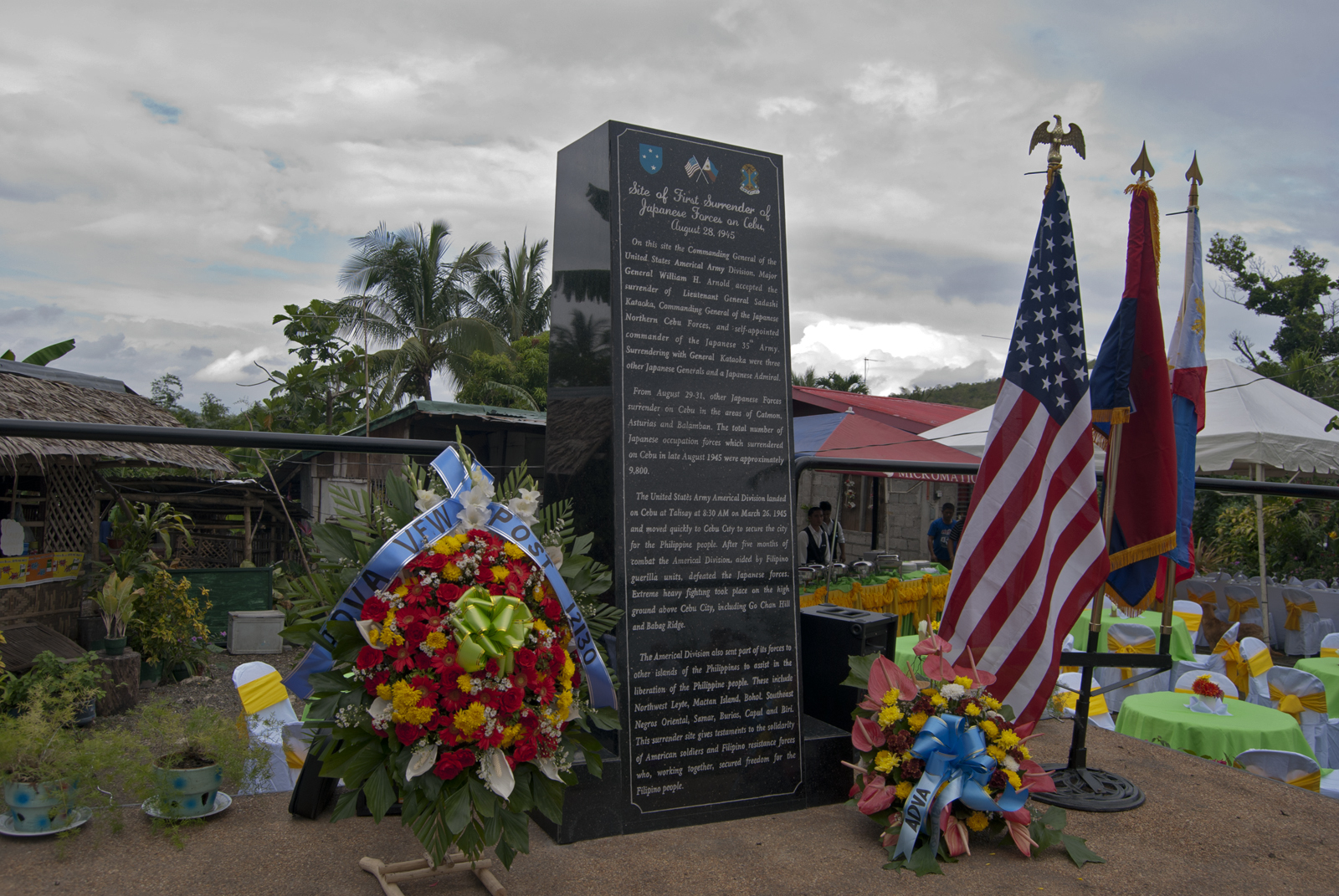
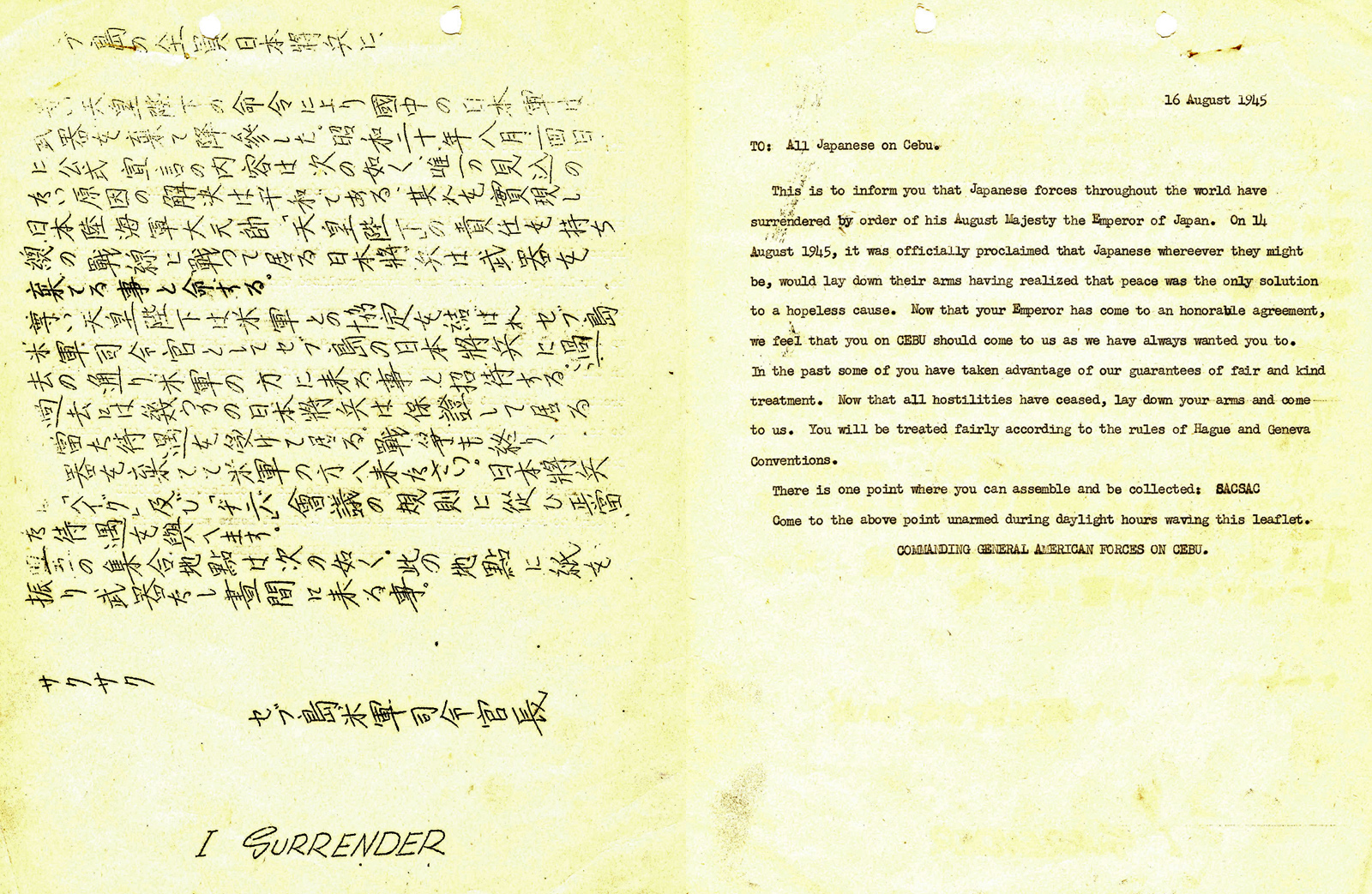
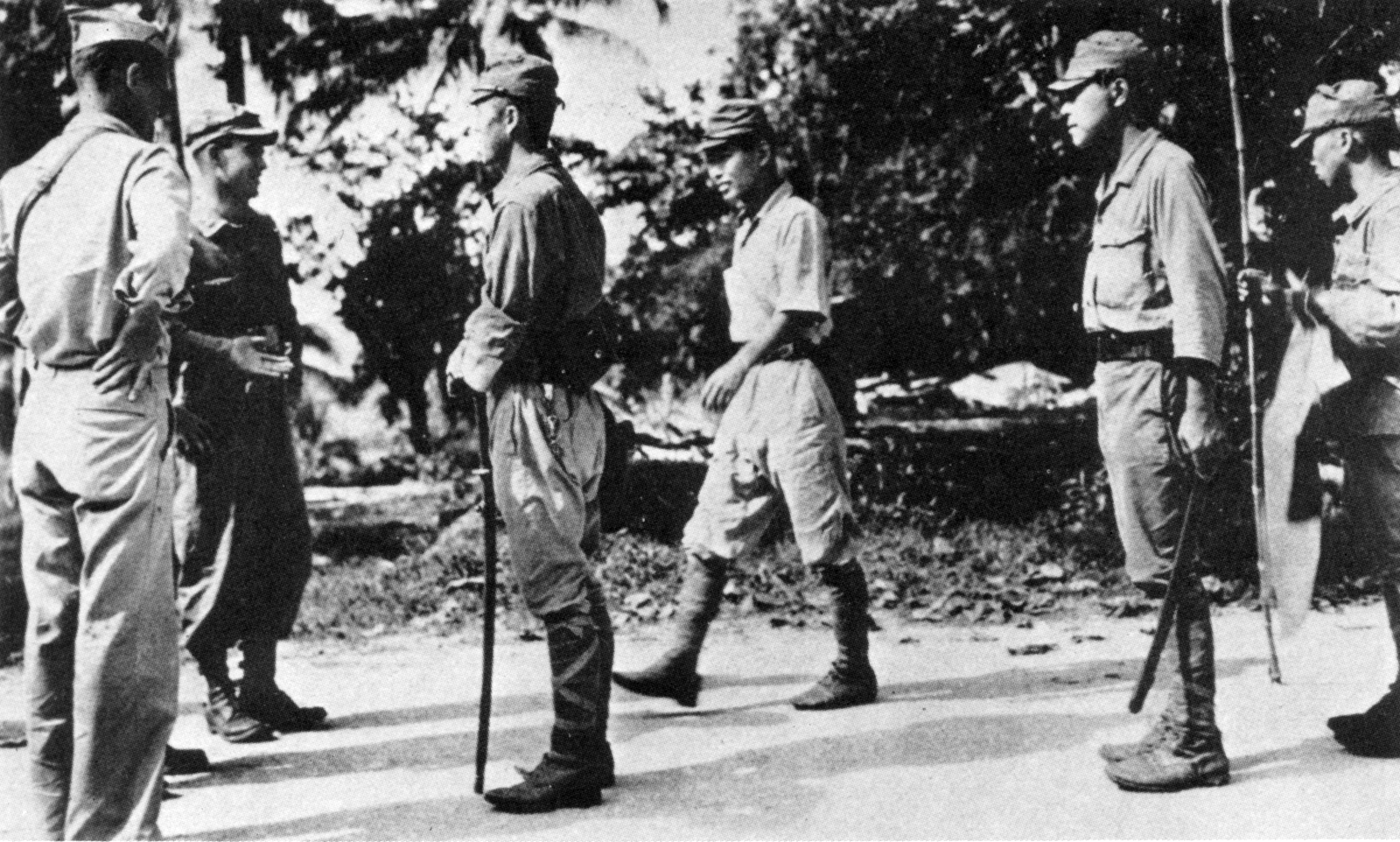
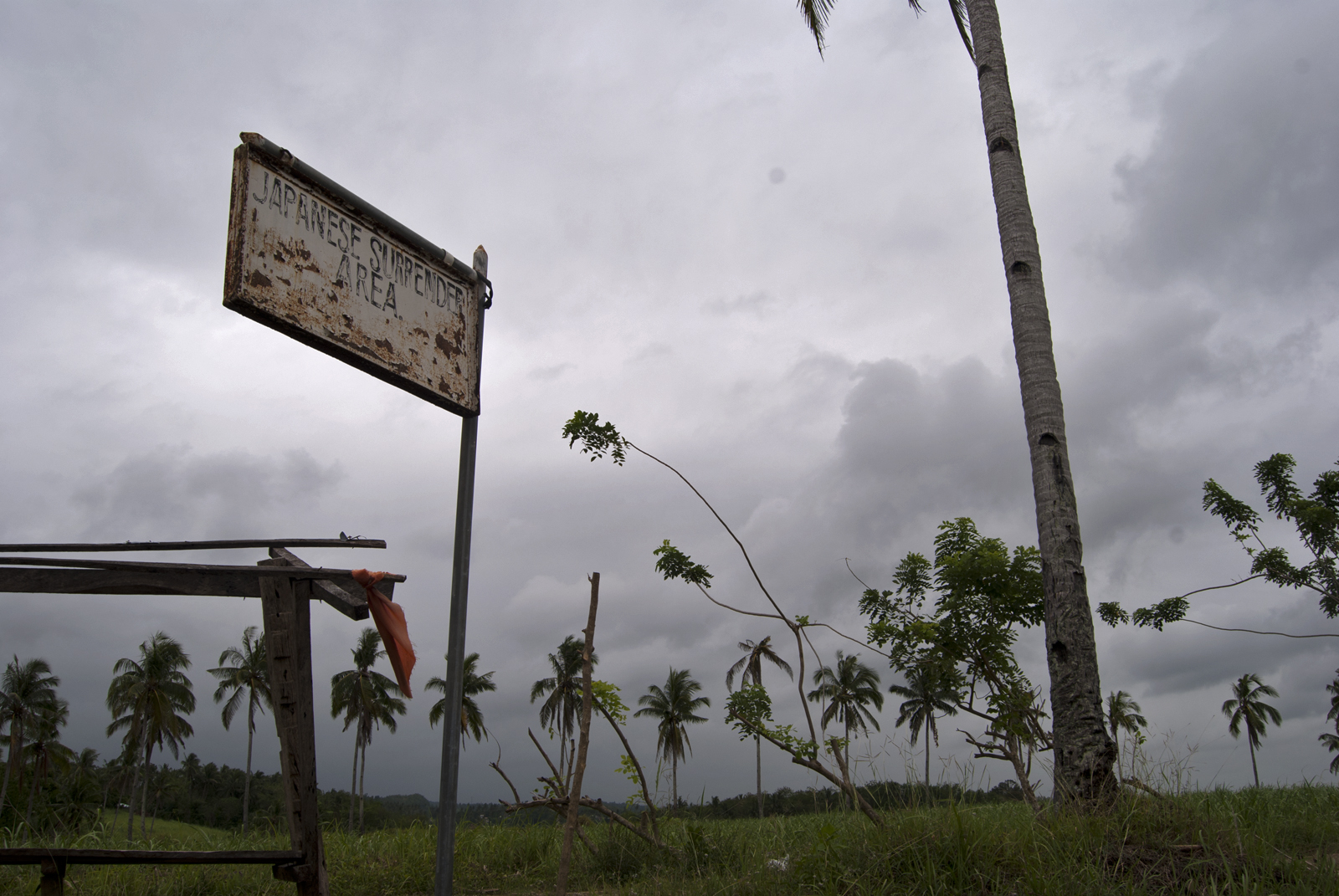

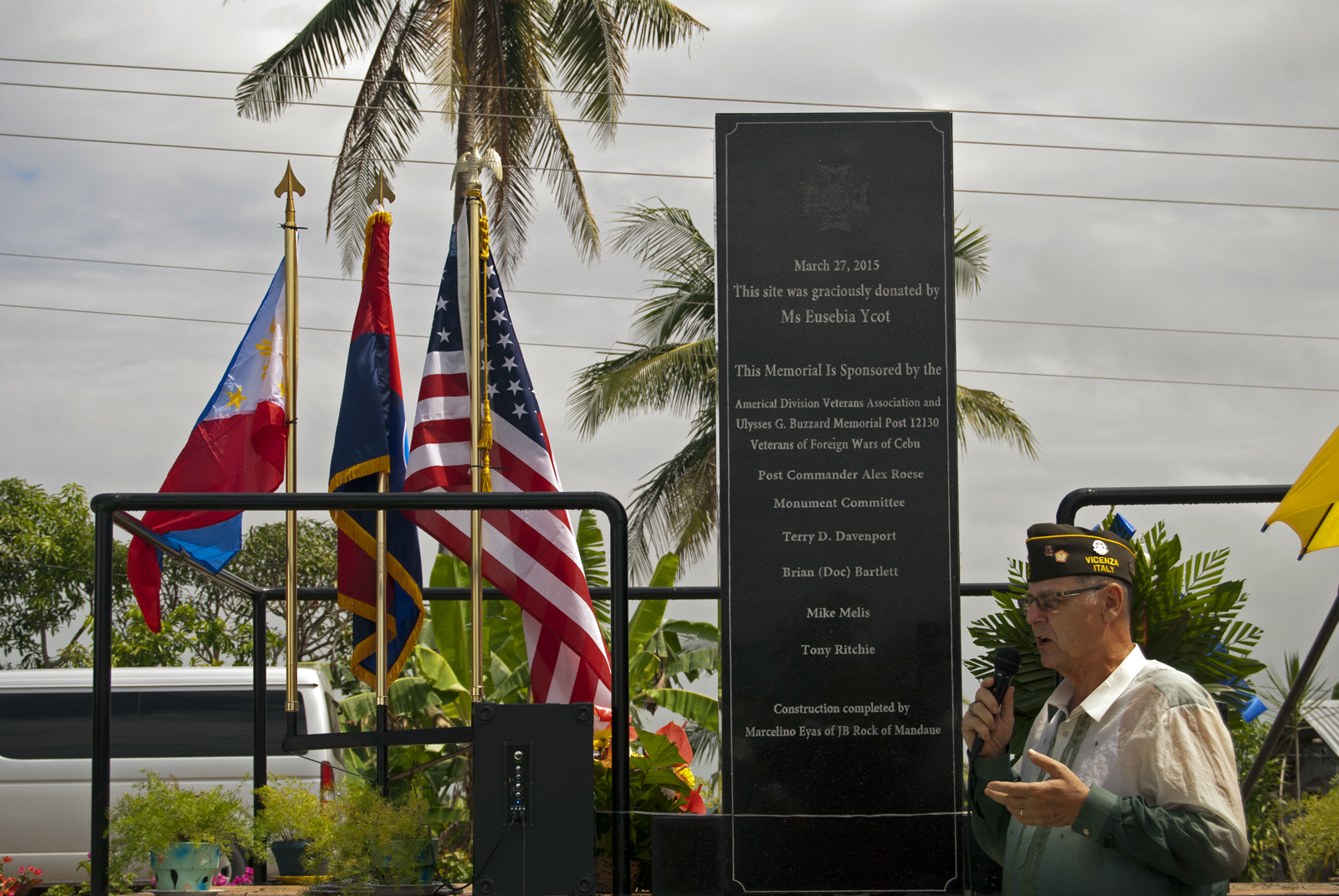
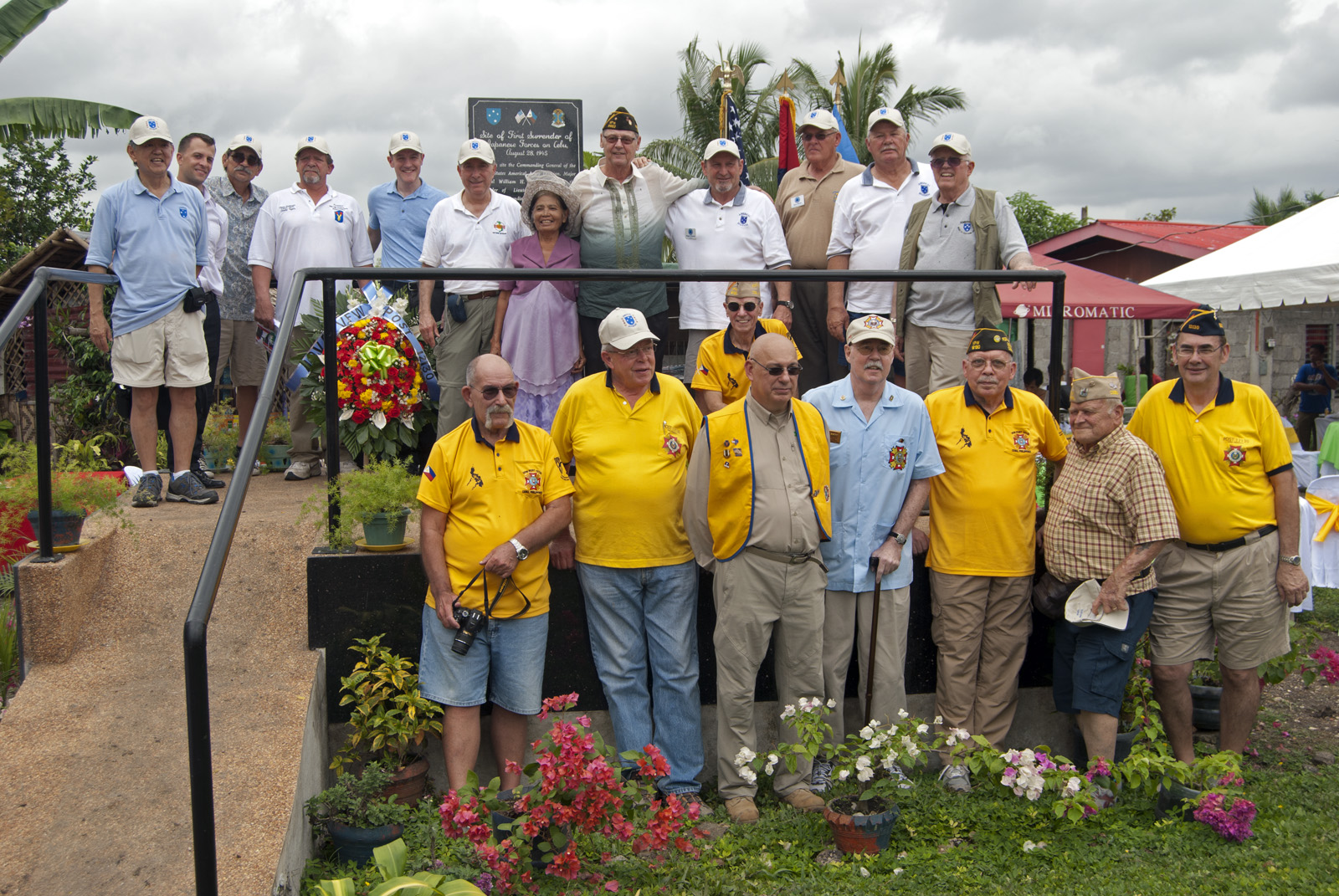
Thanks for writing about WW II in Cebu, sir. This site has been very helpful for a History major like me. Kudos!
Thank you for visiting Cebu. I have been to this place and seen this monument. All over Cebu, I have seen earthworks, pillboxes and tunnels left behind by the Japanese and by the Americans as well. I am an amateur historian and I can access places where few people go.
That is very interesting! Would love to see photos of the fortifications on top of Babag Ridge. I’ve seen a few, but have not been there myself.
Please provide me your email address so I could show you some photos.
Thanks! You can use 182ndinfantry@gmail.com
Hi, Have you seen similar WW2 defensive structures in Lagtang, Talisay City just along the road?
Hi, thanks for writing! Unfortunately I had but one very quick visit to Talisay City, and it went by so fast that my observations wouldn’t be accurate.